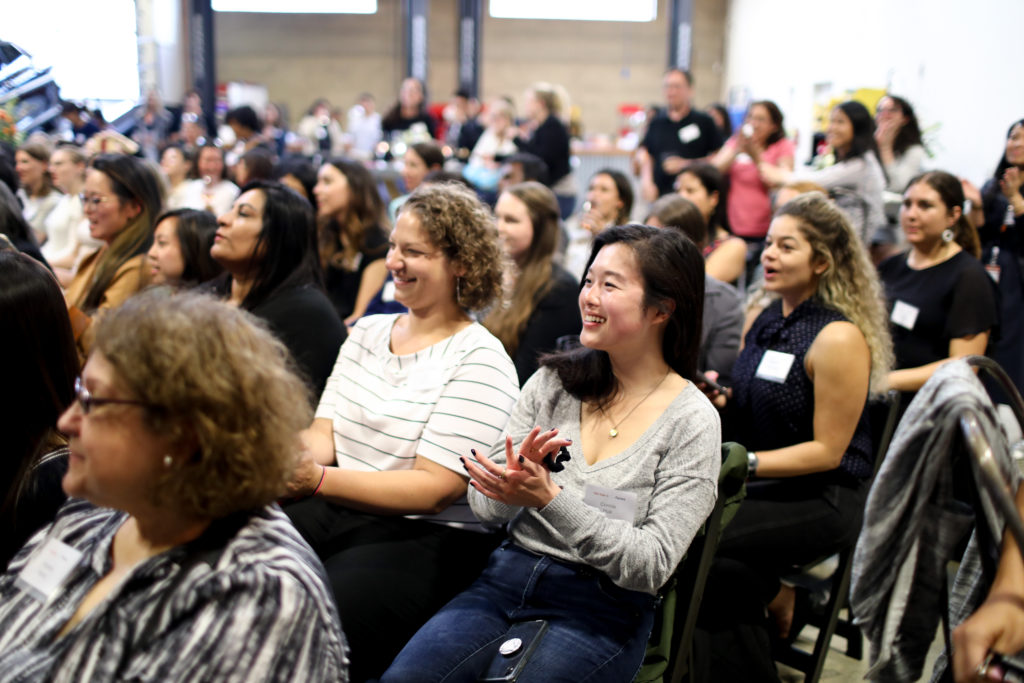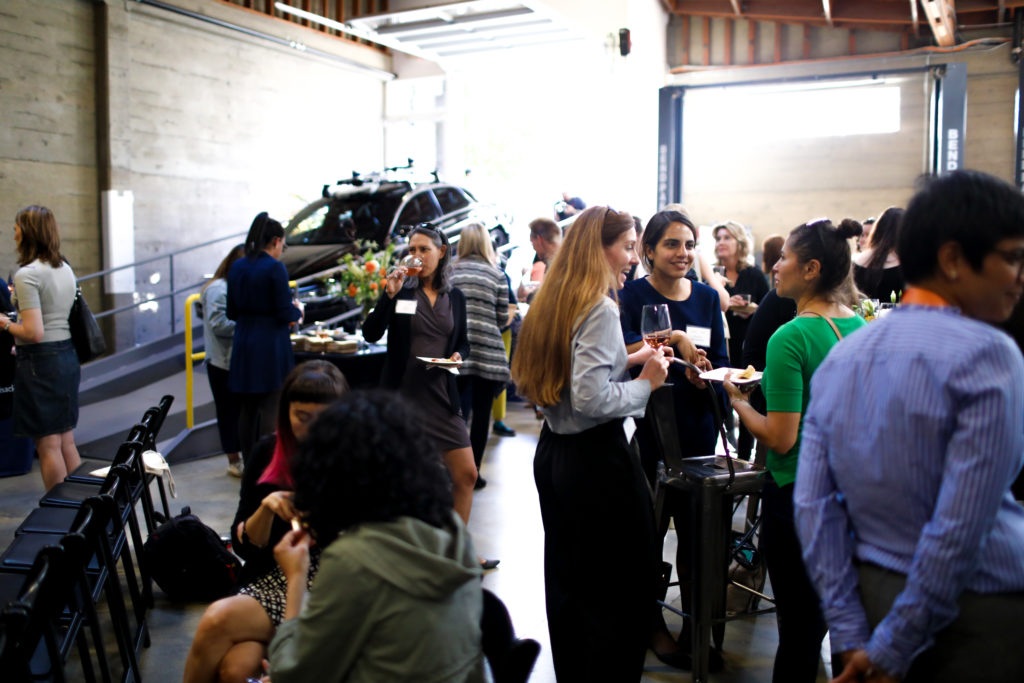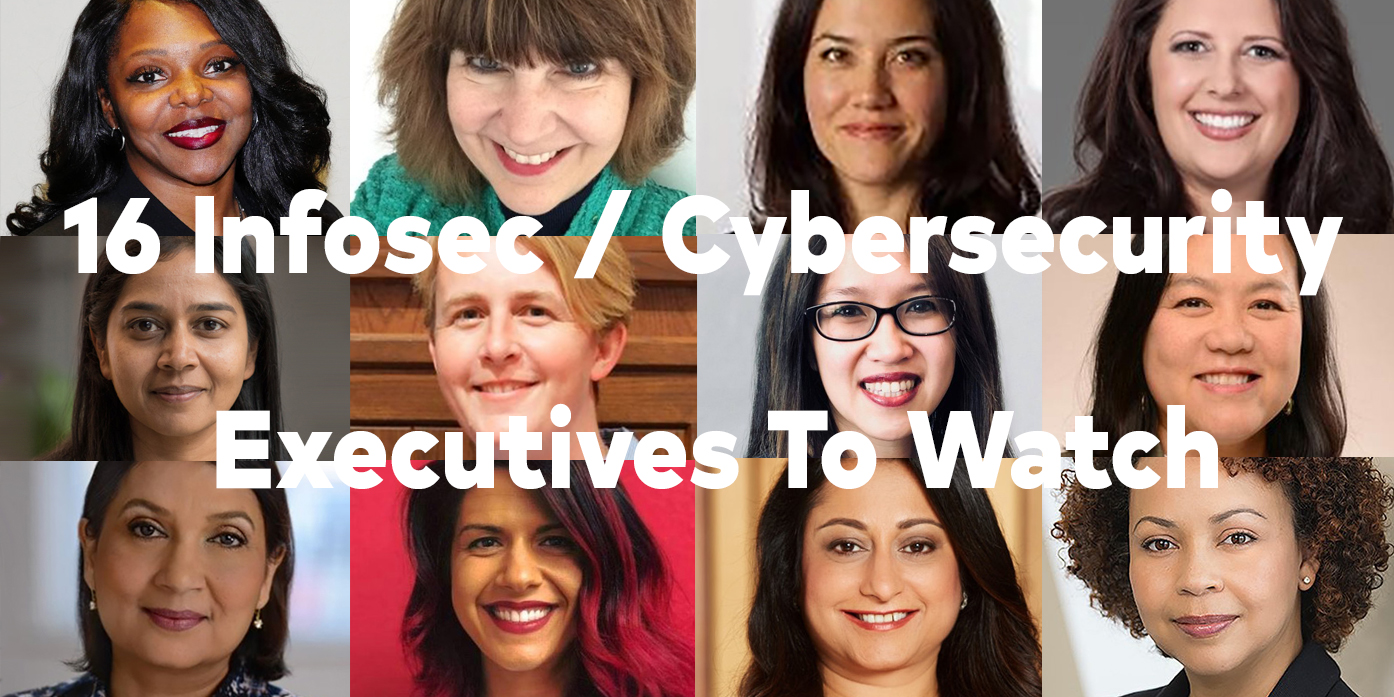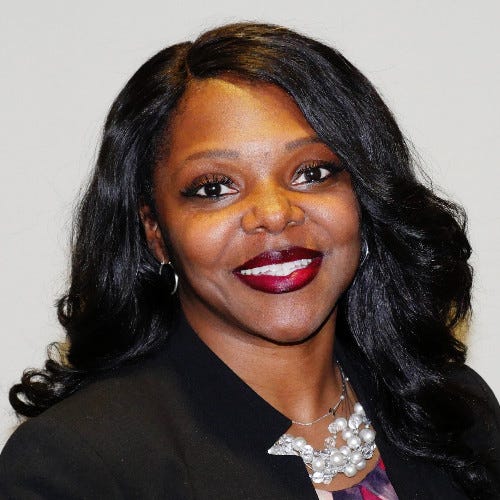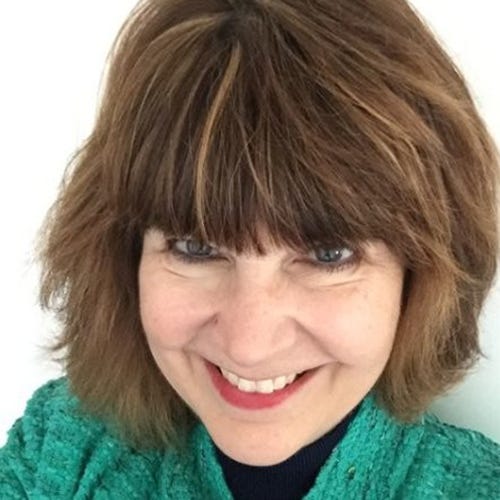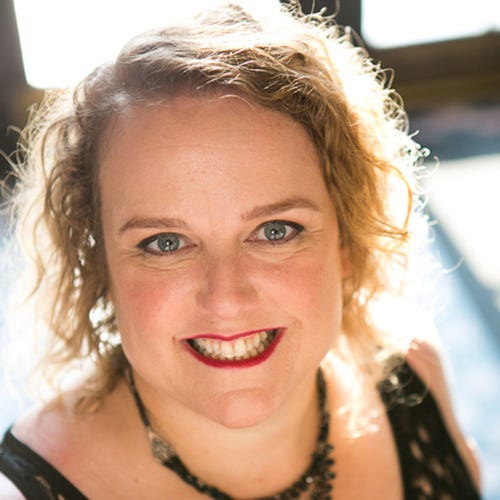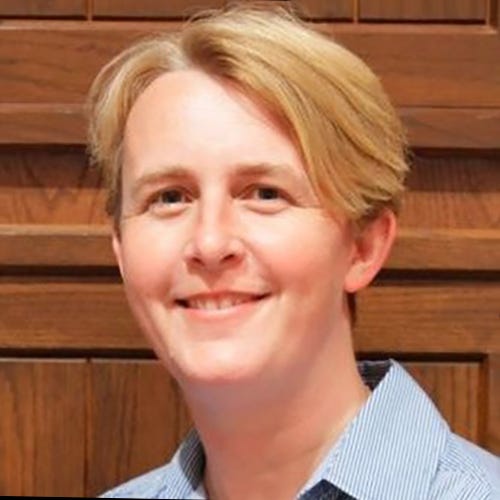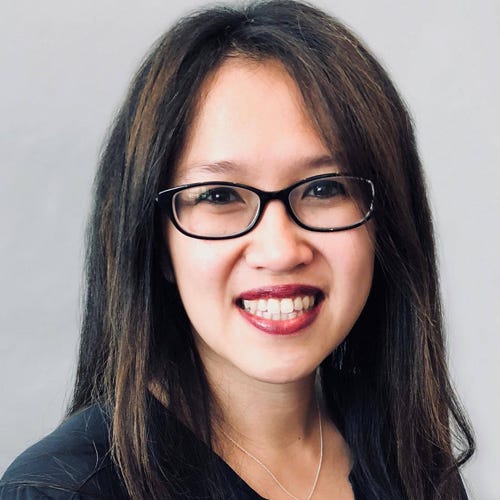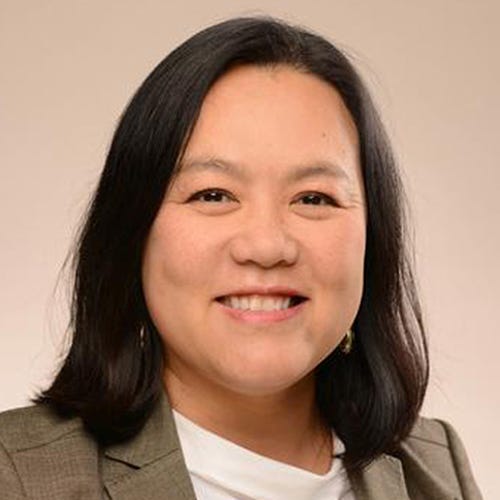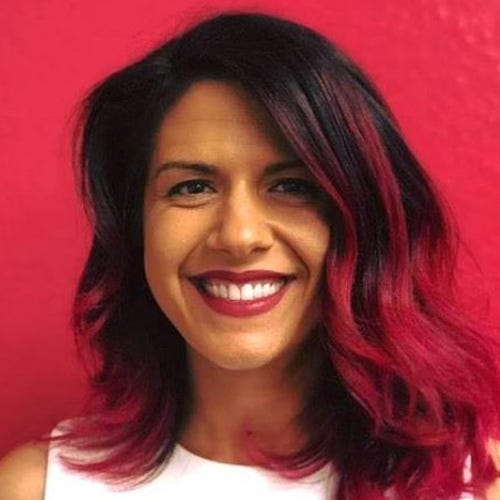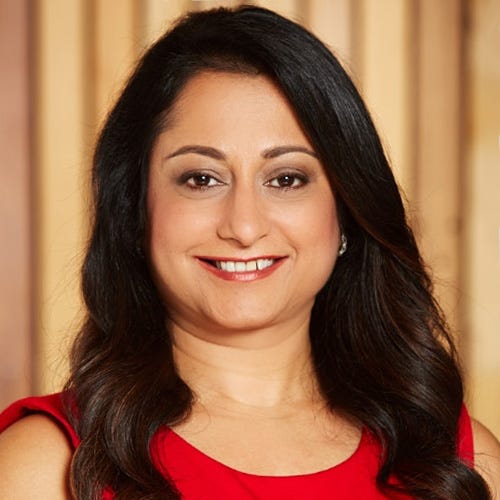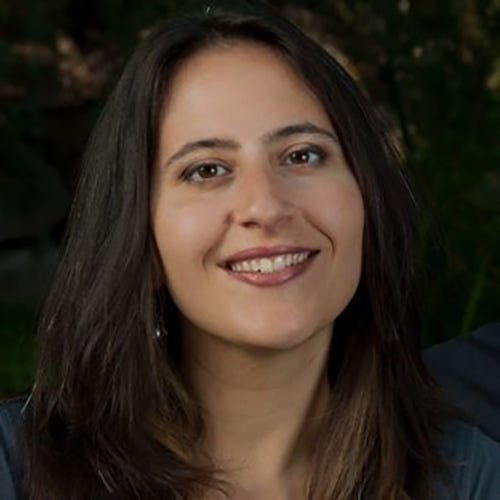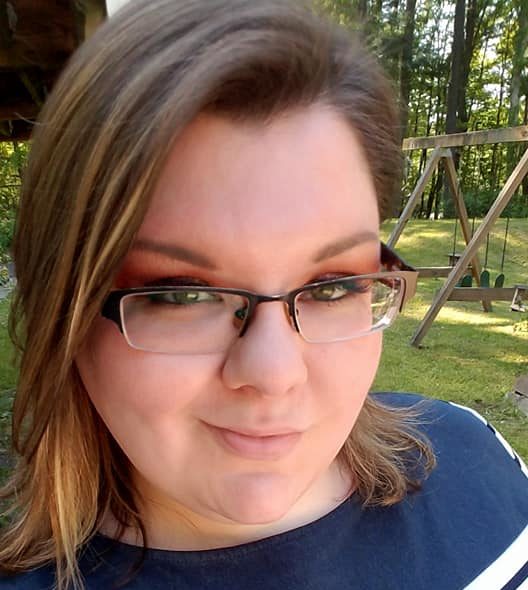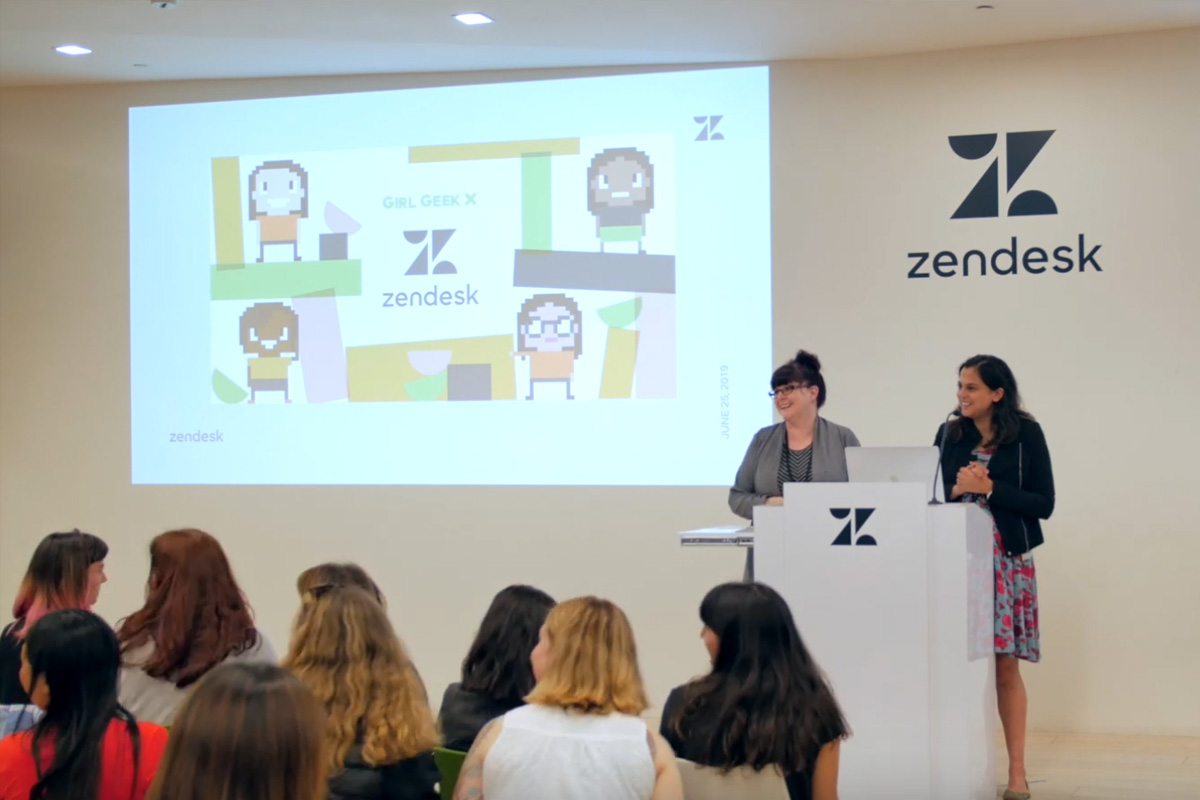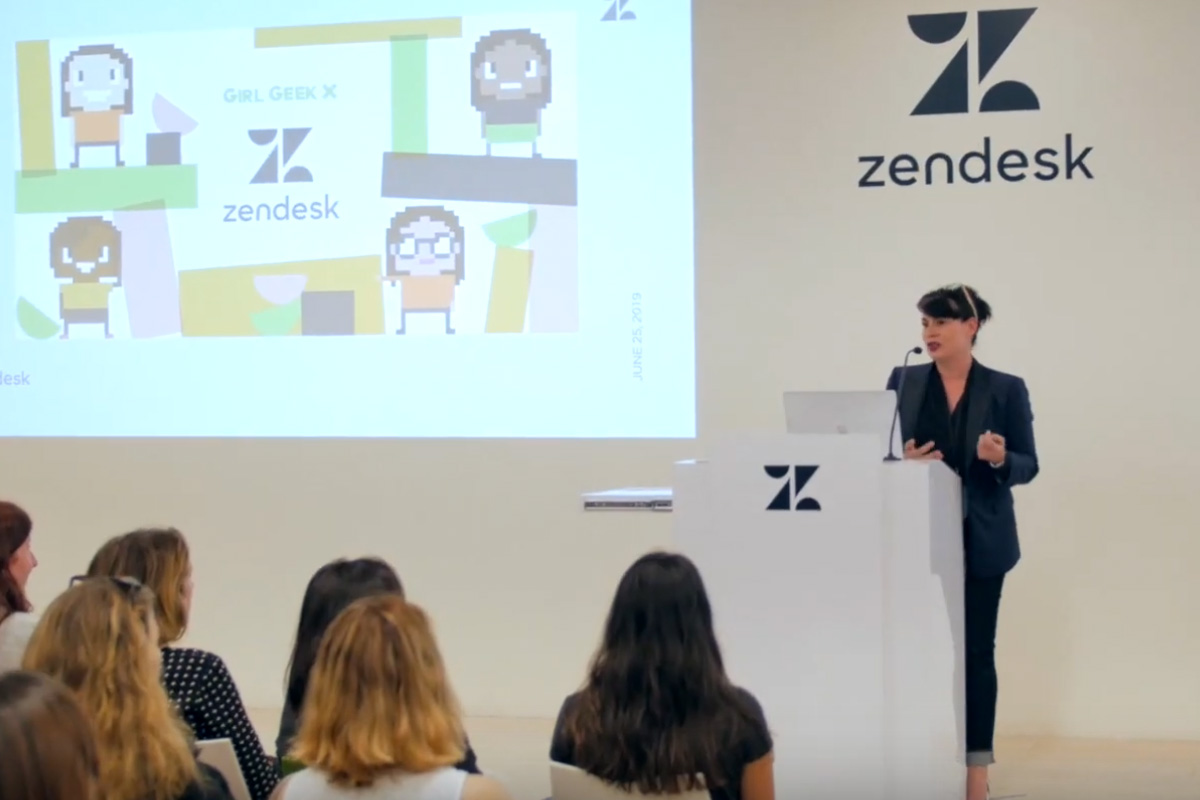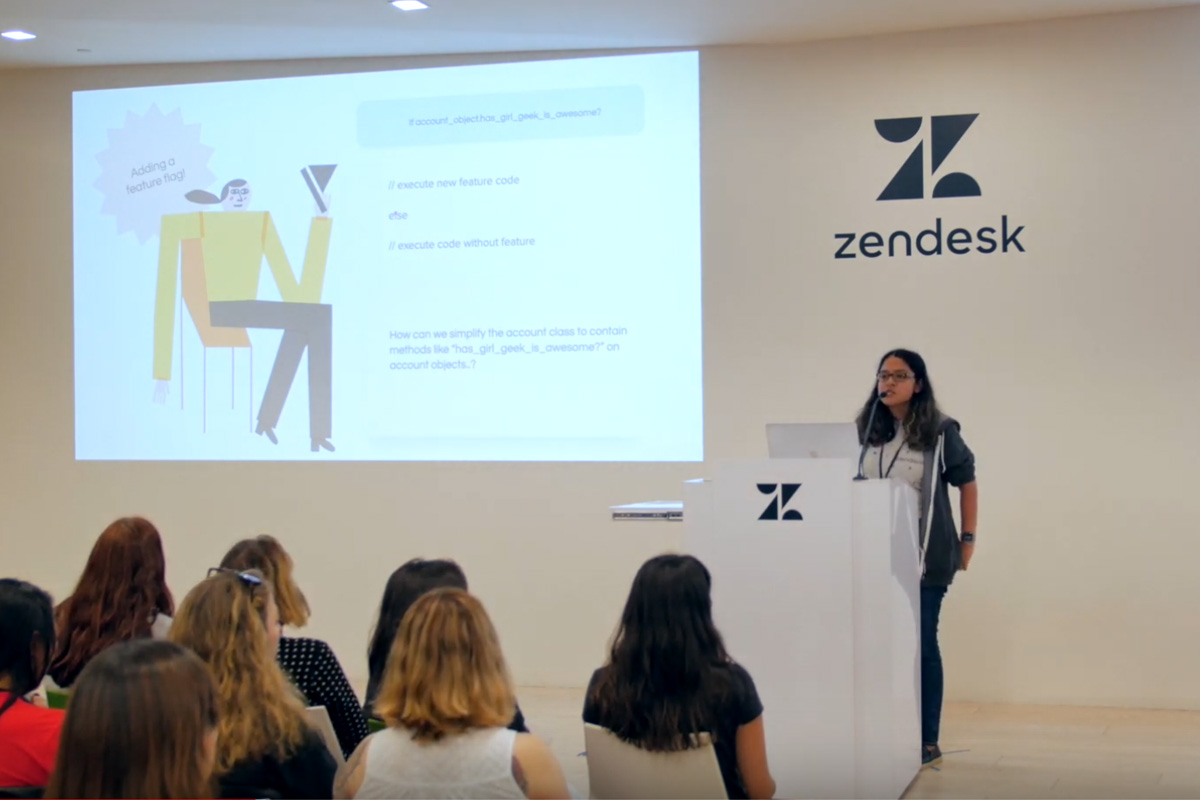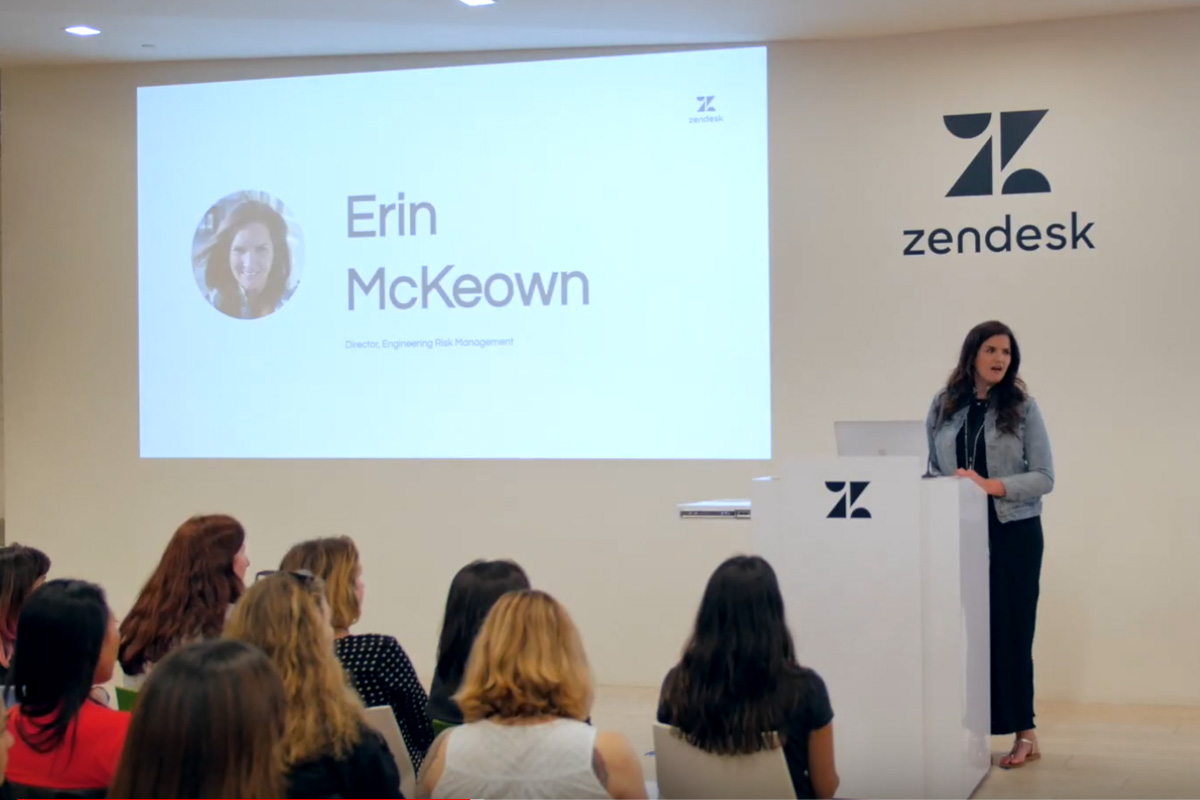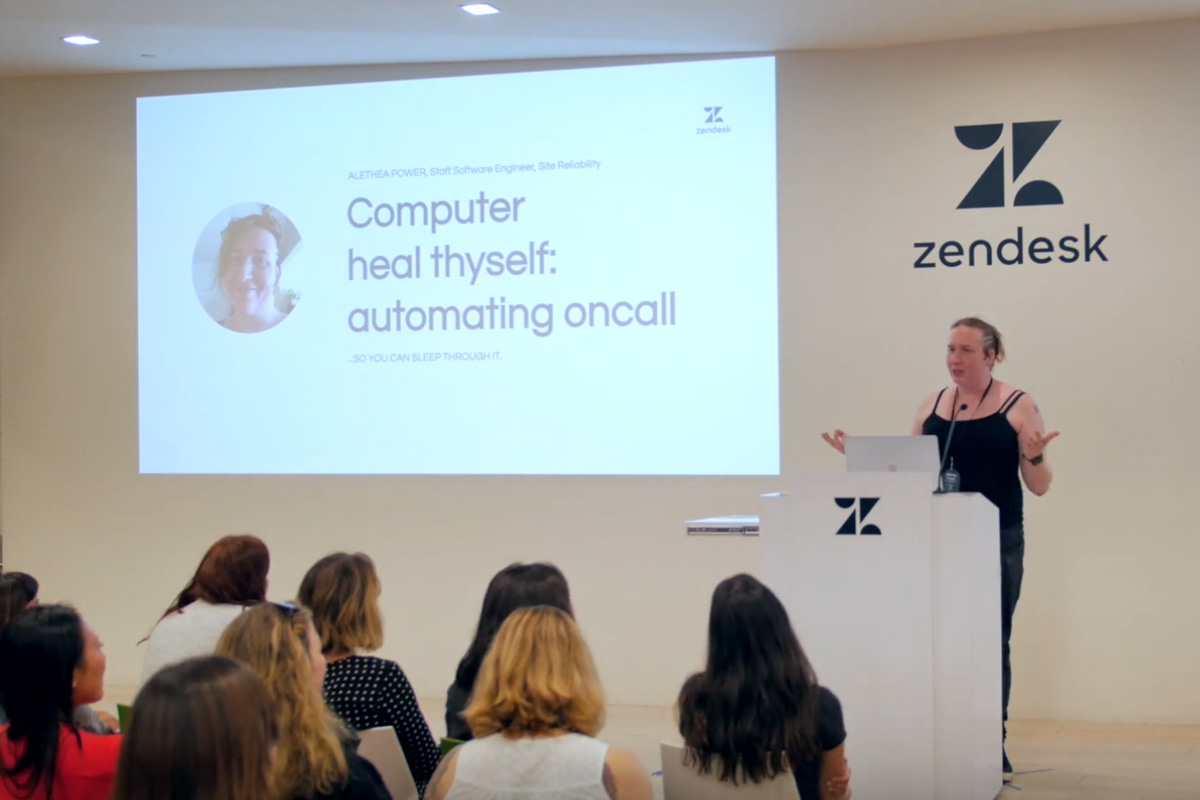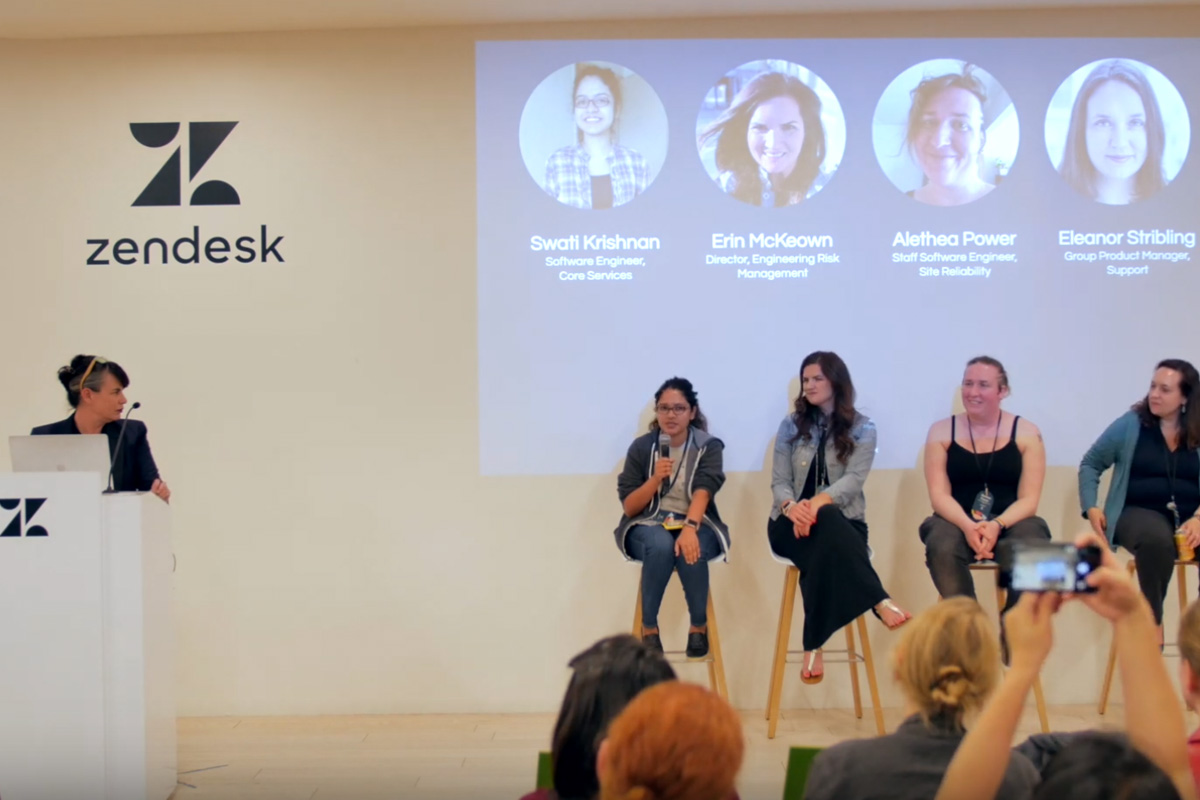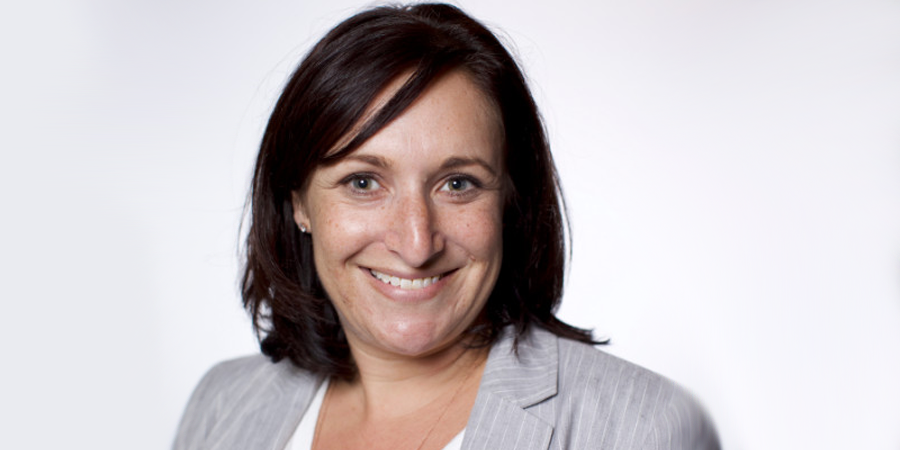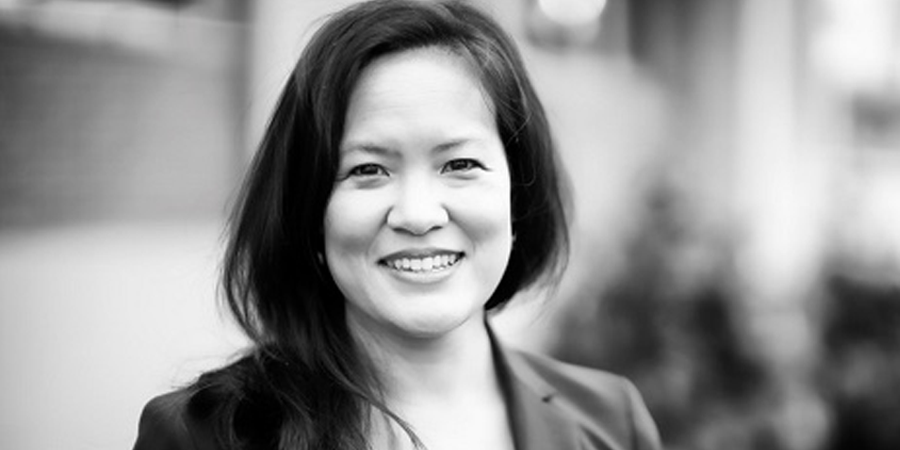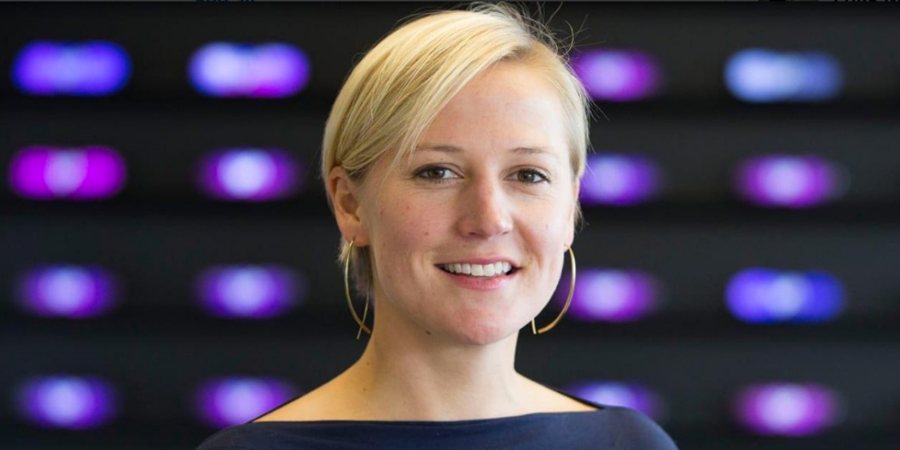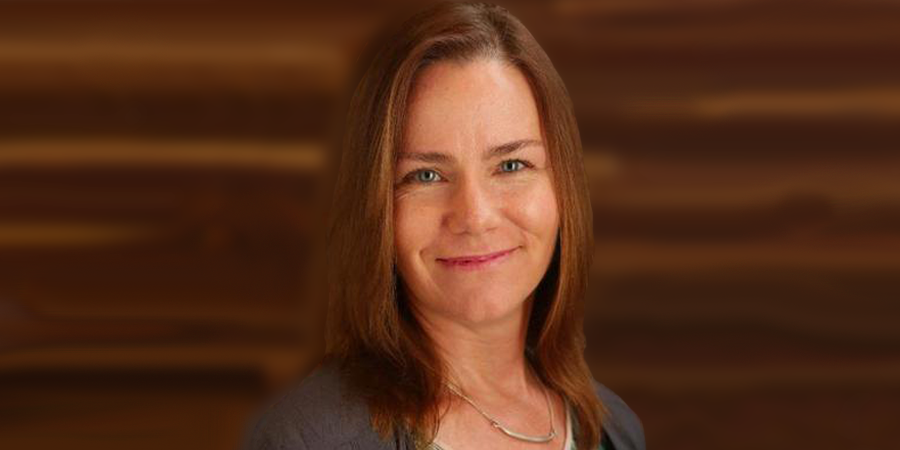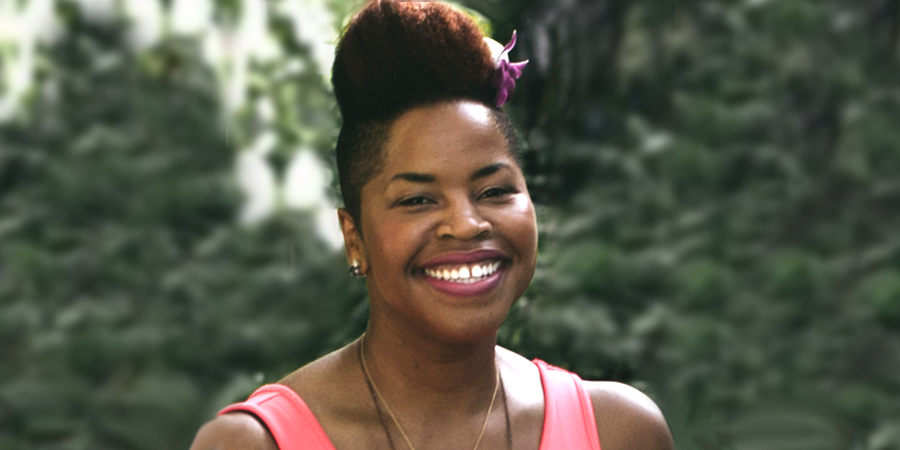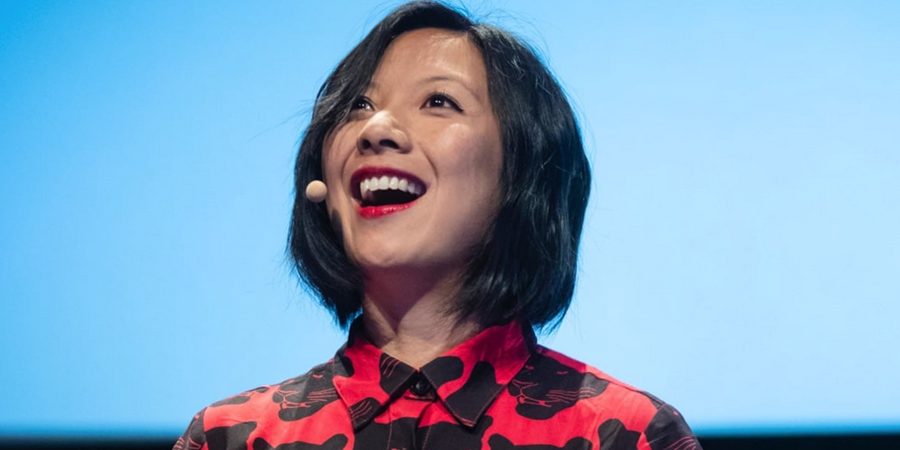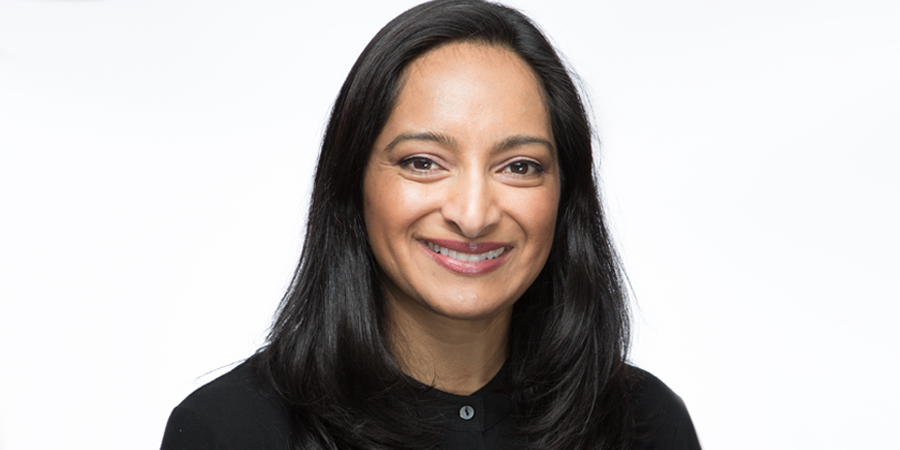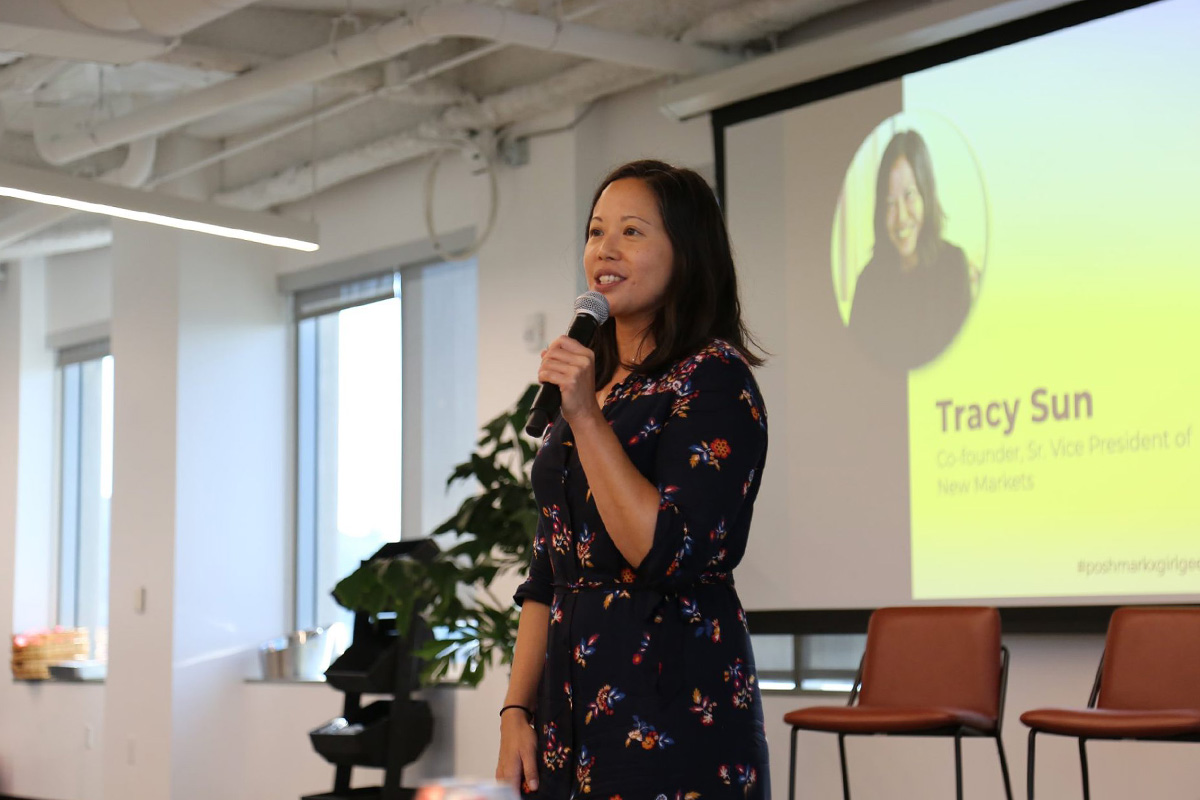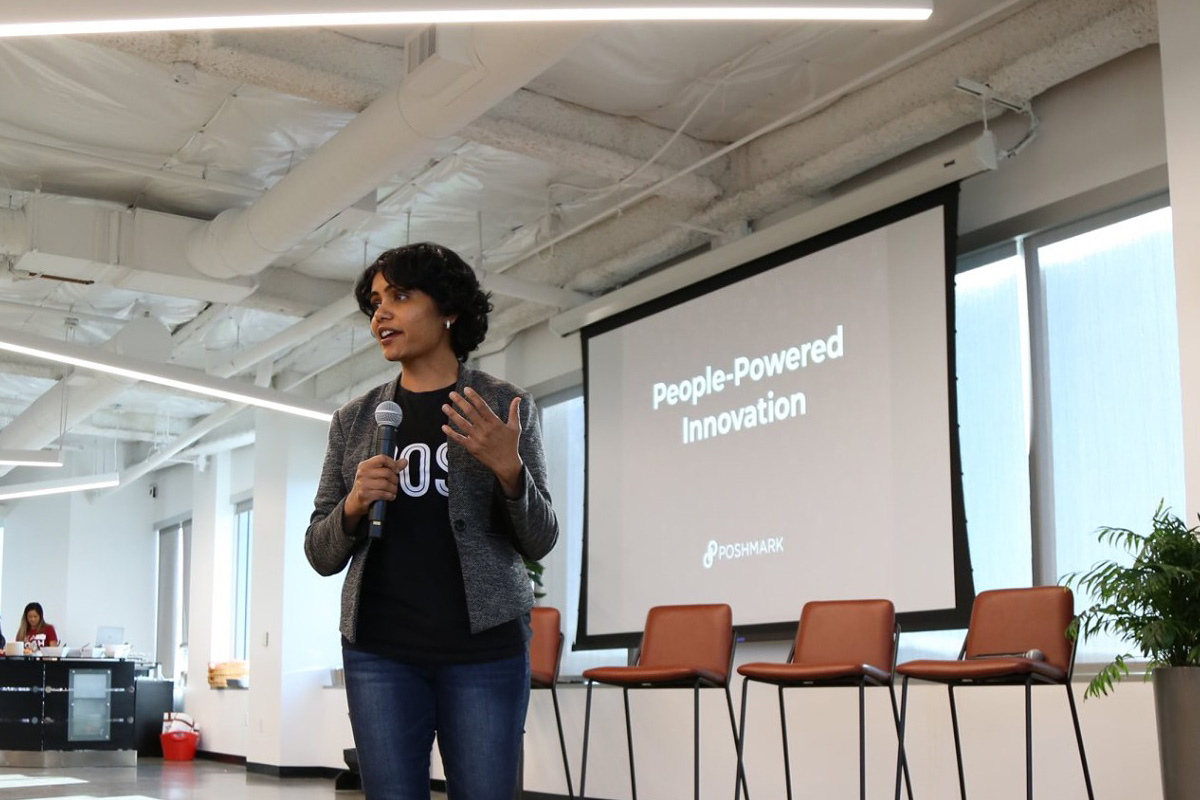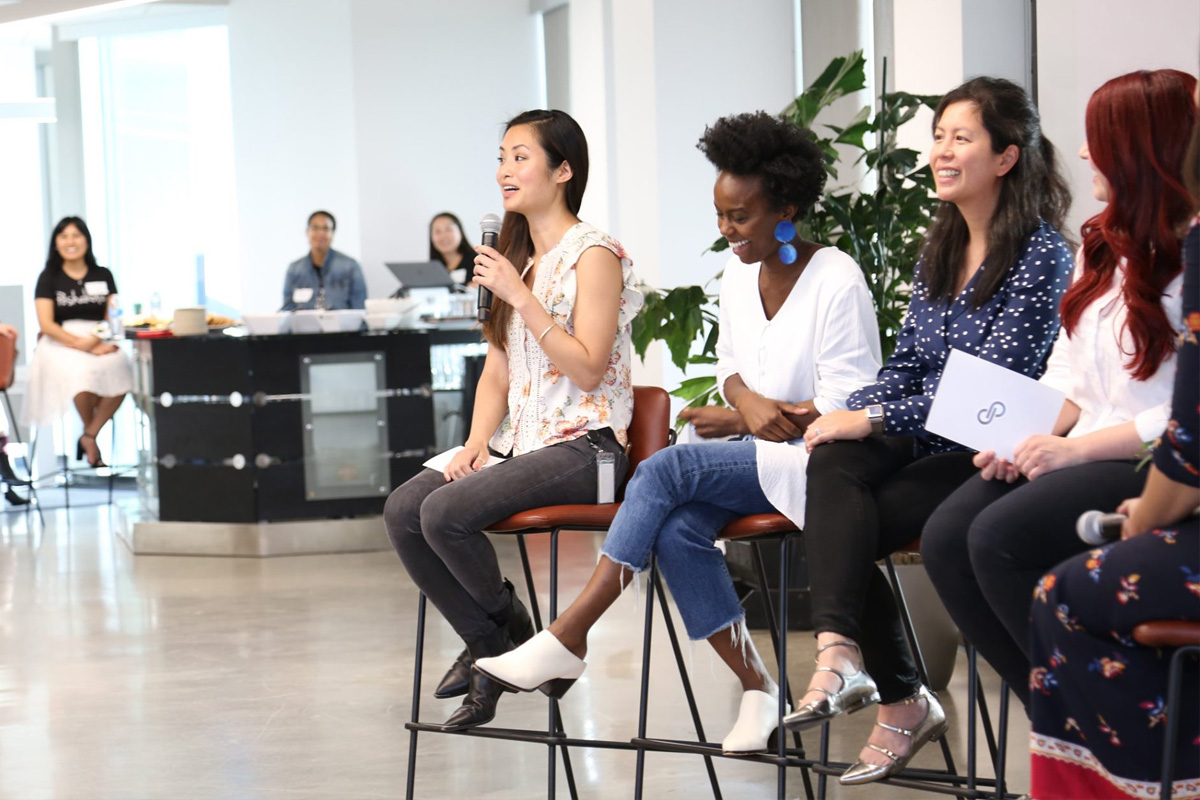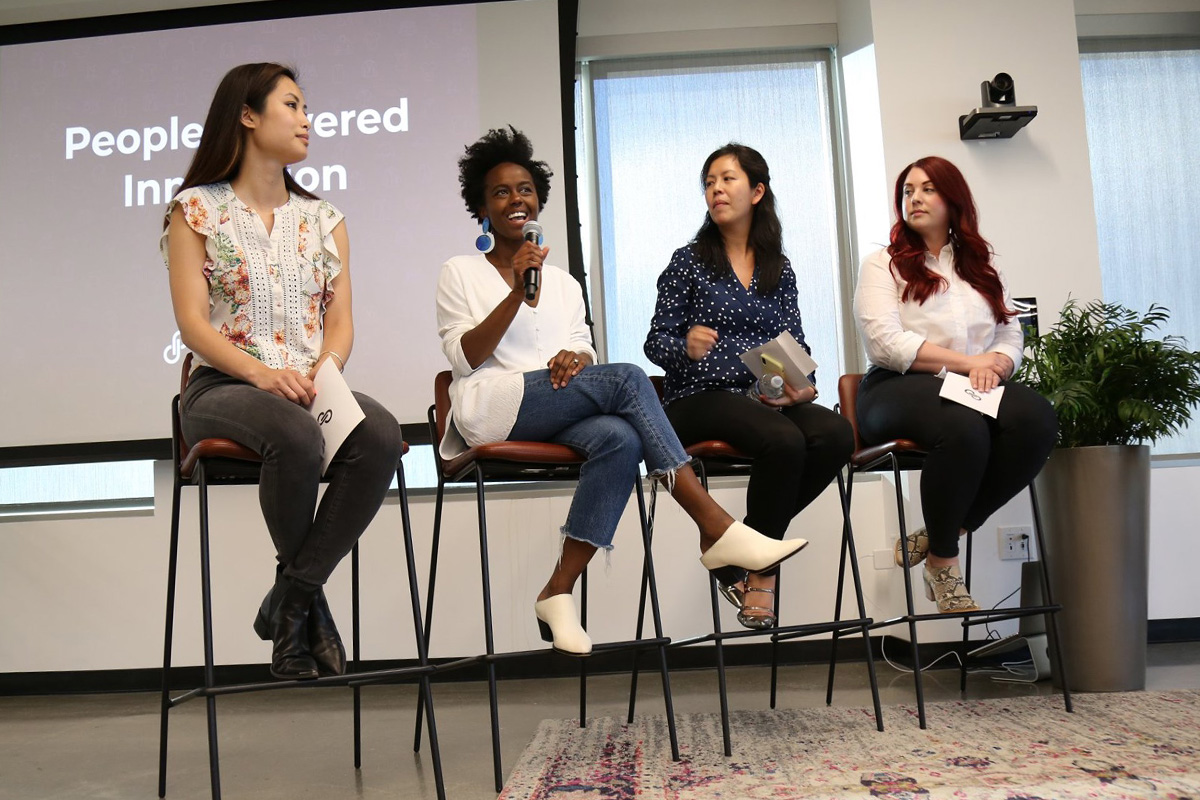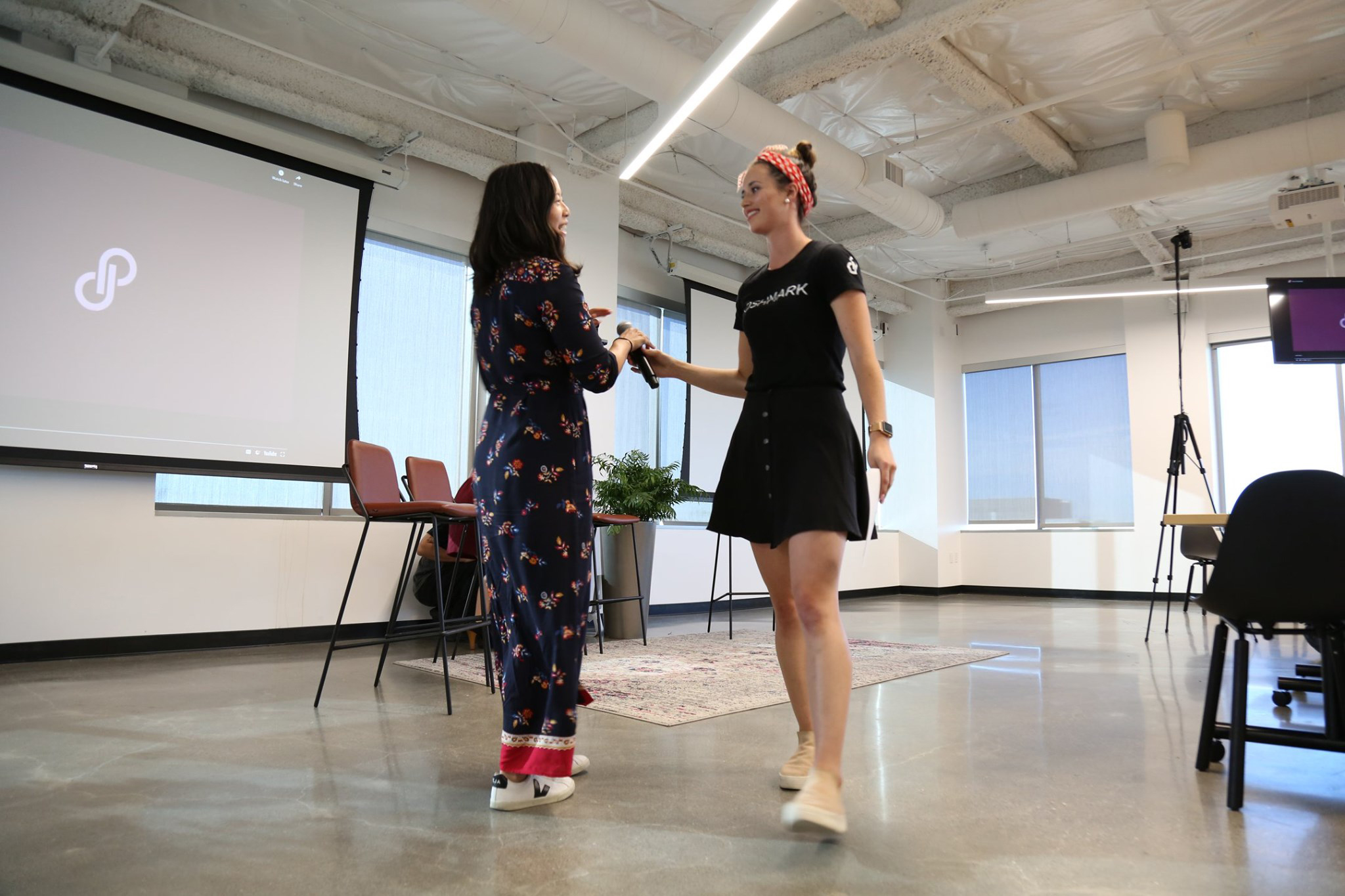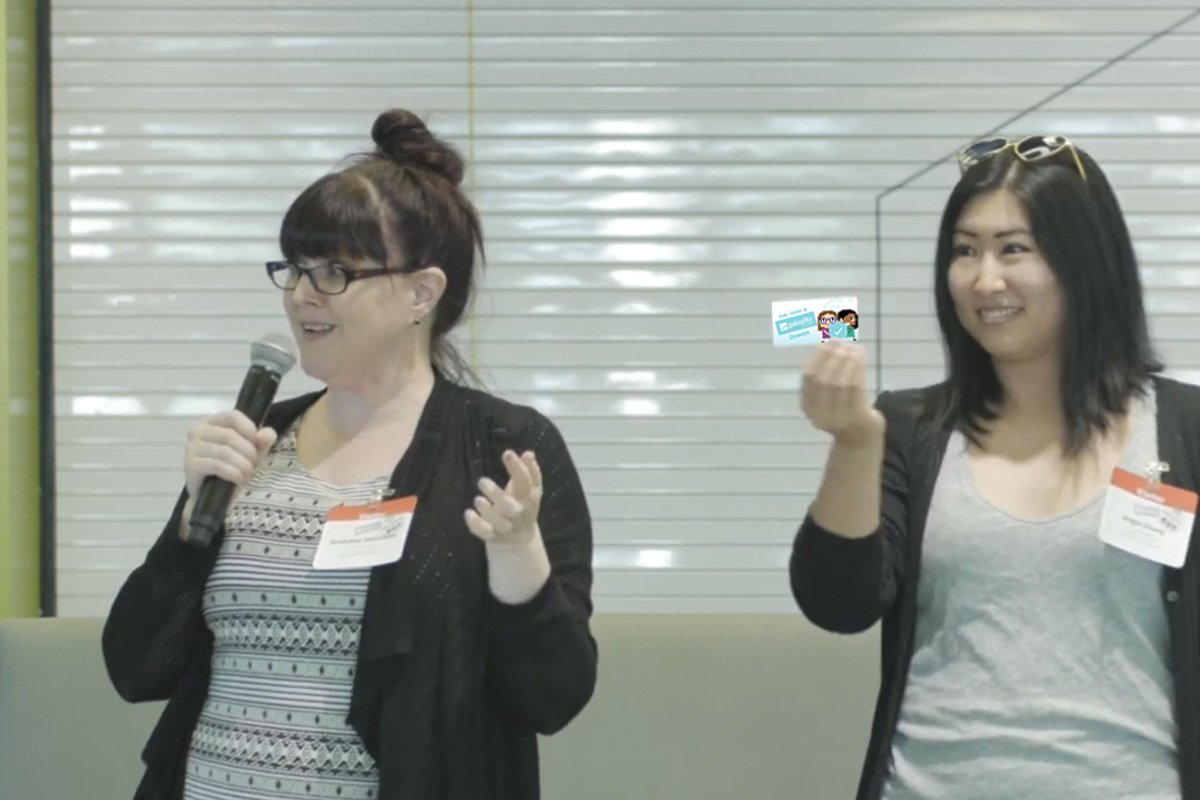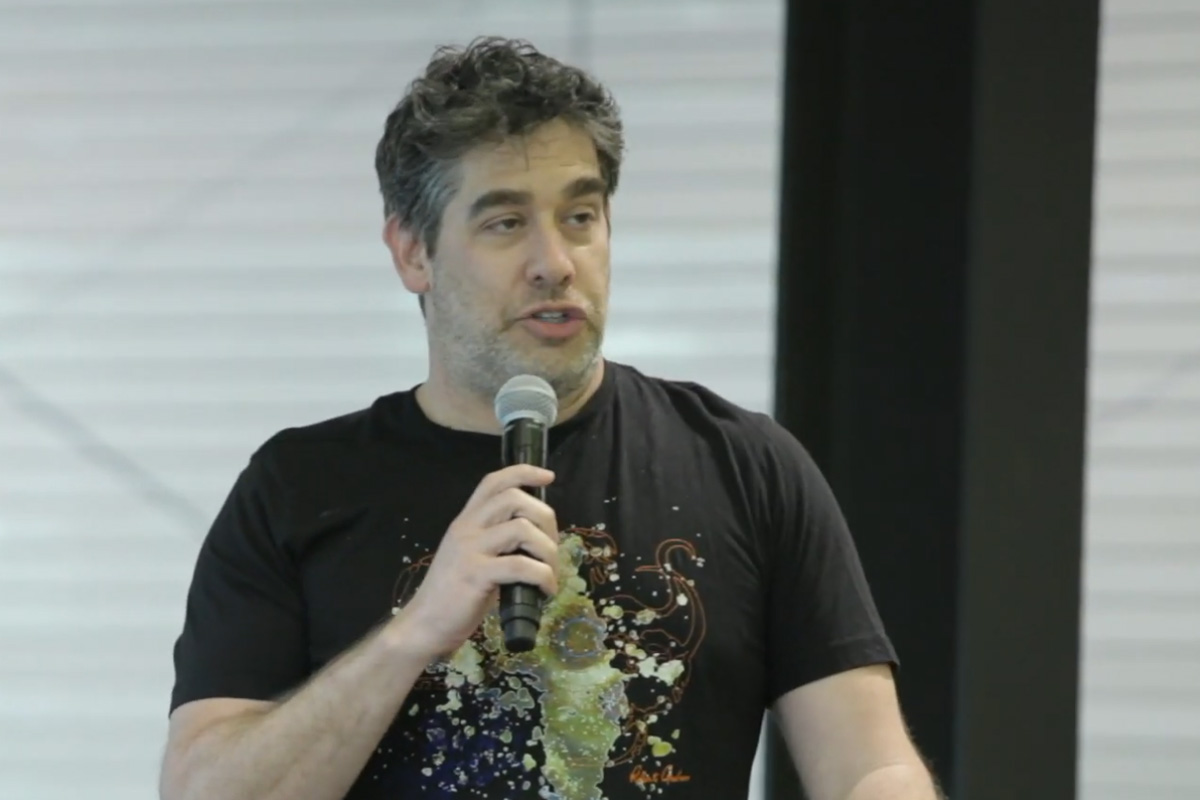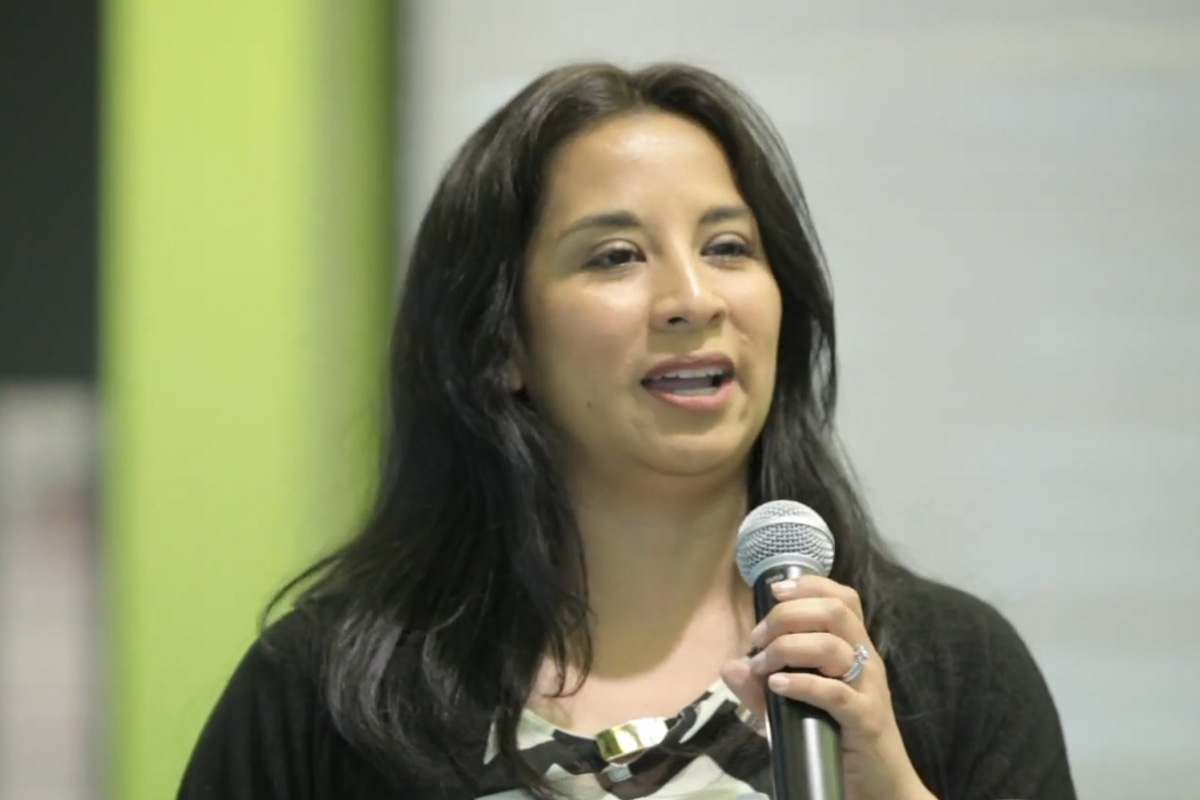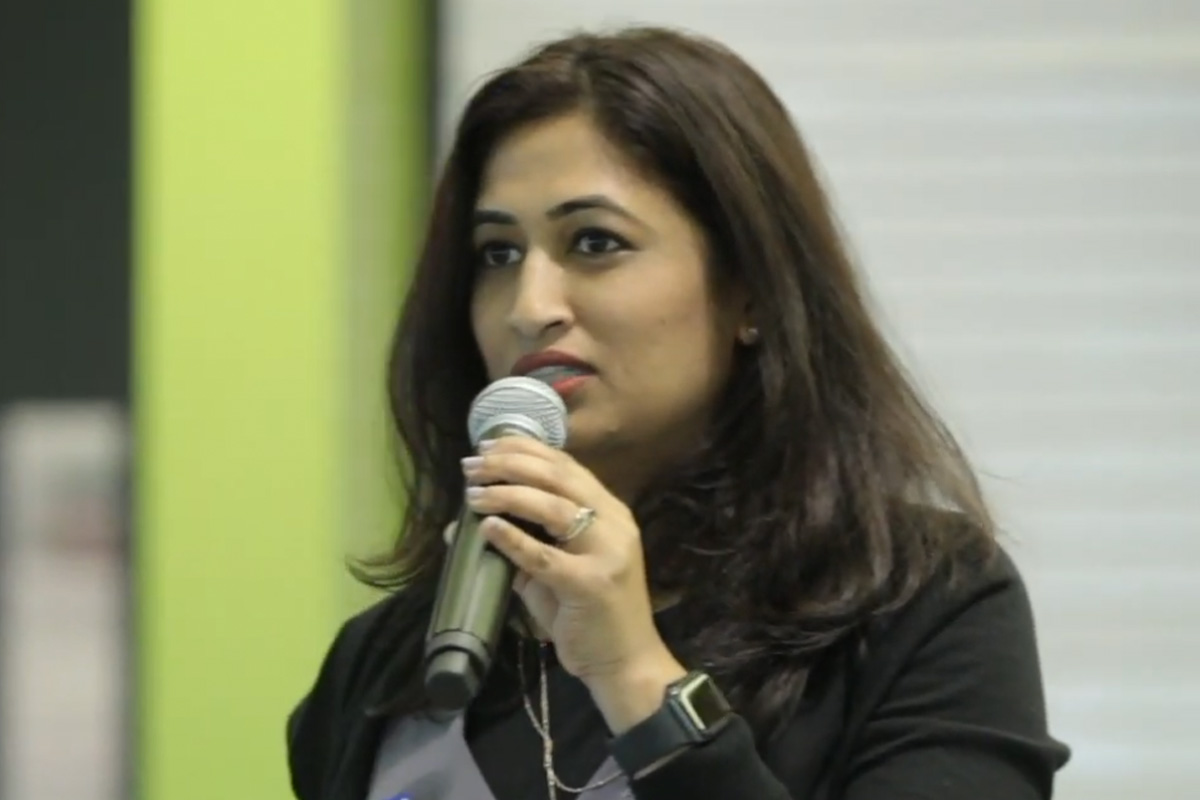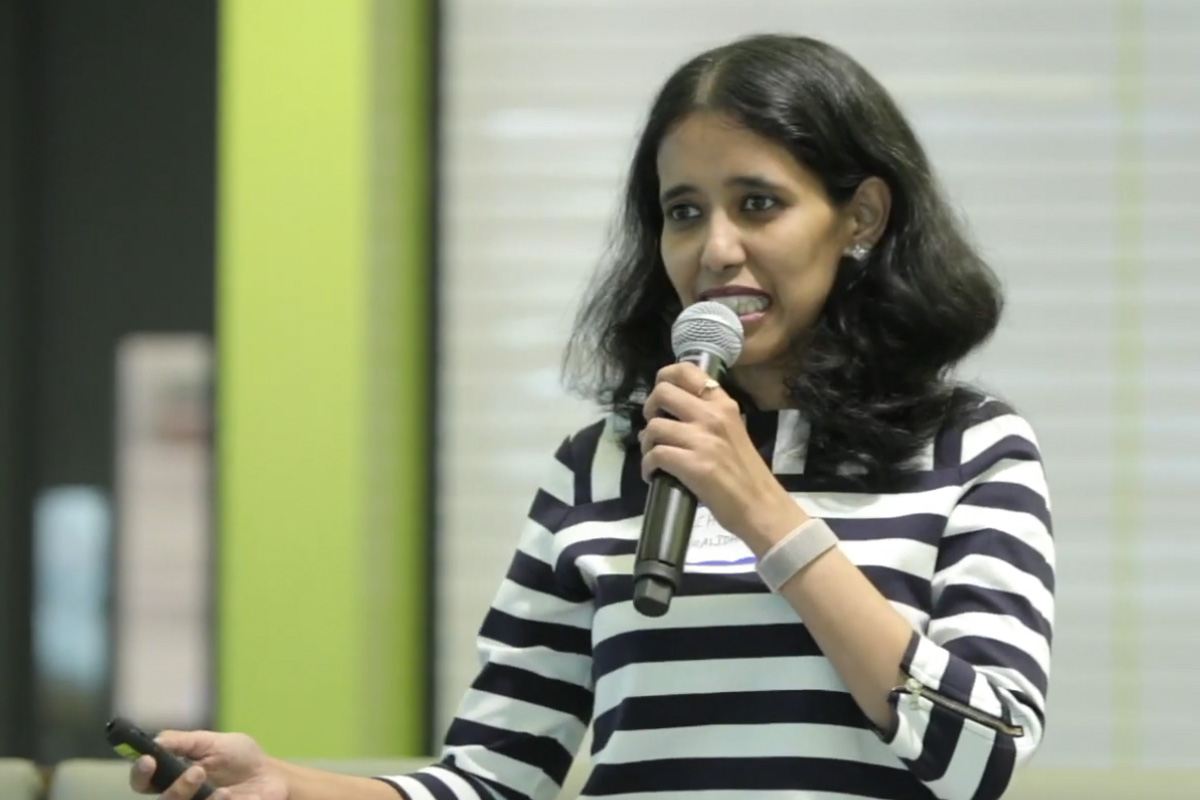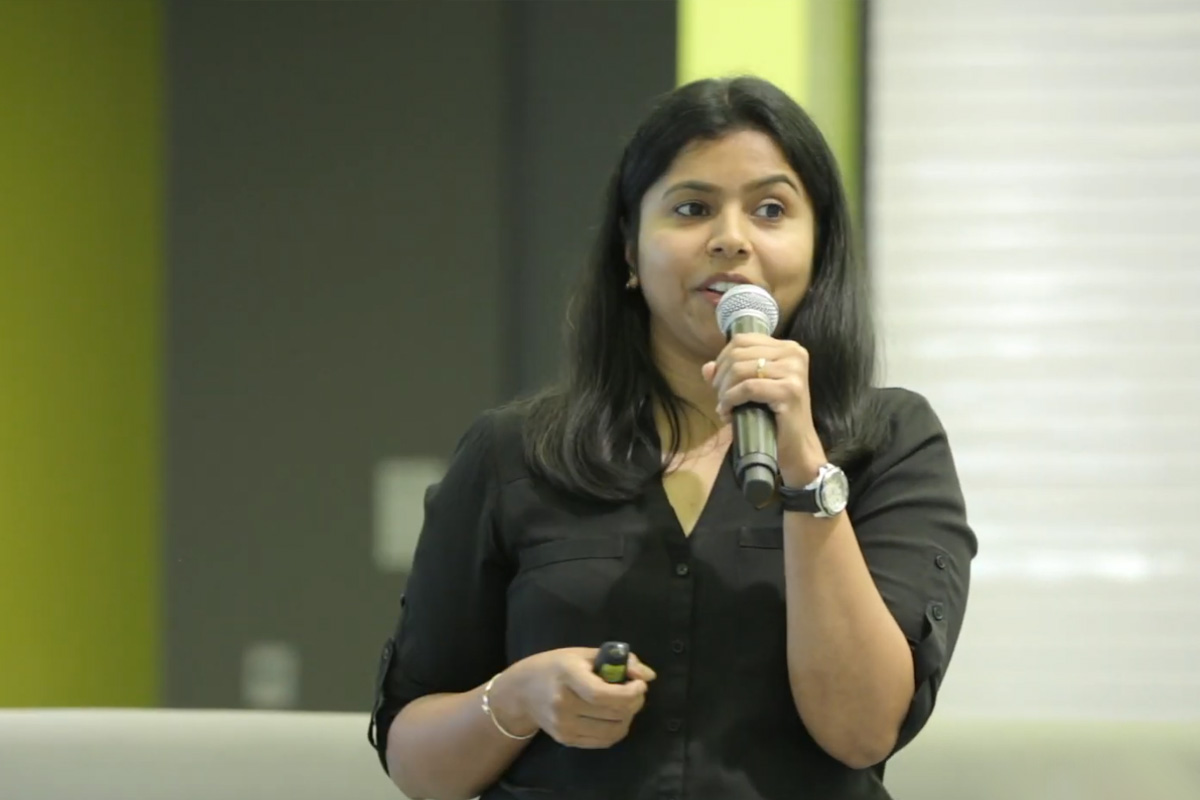Panelists:
Shanea Leven / Director of Product / Cloudflare
Farnaz Ronaghi / CTO & Co-Founder / NovoEd
Rosie Sennett / Staff Sales Engineer / Splunk
Angie Chang / CEO & Founder / Girl Geek X
Transcript:
Angie Chang: Great. Well, we’re all here. Welcome back to Girl Geek X, Elevate. This is our afternoon session. We will be talking about our unconventional journeys in tech, since it seems like that seems to be more common than people realize. The diverse pathways we have found to our jobs, that we get lots of people coming up to us, and saying, “Wow, you’re doing a really good job. That’s a successful career.” We’re like, “Oh, okay.” And people are like, “How did you get there?” So, hopefully, we’ll be able to share some of these stories, and I’m gonna ask each of our panelists to talk about themselves and share their backgrounds and their journeys and tell us their personal stories.
Shanea Leven: Sure, I’d love to start. Hi, everybody. I feel like I’m echoing.
Angie Chang: I think you sound fine.
Shanea Leven: Okay. Okay, cool. Hi. I’m Shanea, I started actually, my career, as an analyst and I was really interested in getting into tech. I actually started a digital marketing agency, way back when. That worked really, really well. I taught myself to code, for a number of years. The thing about myself, is that after starting, doing the entrepreneur thing, I wanted to get into tech in Silicon Valley, and so I ended up taking a job at Google, as a Program Manager.
Shanea Leven: Along the way, I really wanted to get into Product Management, except that the prerequisite at this time was that you needed a computer science degree. For myself, having gone on a ton of journeys trying to figure out how to navigate the tech space, one of the big questions was, am I technical enough? Do I have enough technical skill?
Shanea Leven: In order to get that product management job, I had a few options in front of me, which was to either go to a bootcamp, trying to gain additional technical skill, or get a computer science degree, or possibly get a technical Masters degree, which I know a lot of people face. For me, I ended up going back to school to get a Computer Science Bachelor’s Degree, while working full time at Google.
Shanea Leven: After, I became a Product Manager. I proved myself to gain that technical skill. I went on to work at Ebay, as a Senior Product Manager. I went on to work as Head of Product, at a startup, and now I’m a Director of Product at Cloudflare.
Angie Chang: Awesome. Farnaz, I think you have kind of the opposite story, where you started with the CS degree, you want to share a little about your journey?
Farnaz Ronaghi: Yes, of course. Hello, everyone. Yes, I come from a very traditional computer science background, but I did not start by choosing computer science as a major. They way education works in Iran is that for free. I’m from Iran, from Tehran, education is for free. However, we go through a very detailed, competitive University entrance exam. I was an A+ student, and I was very arrogant. I picked my top major to be double E, and I told everyone else, “I don’t need to pick more, that’s it.”
Farnaz Ronaghi: That was the paper I submitted. But my Mom, out of just being so kind, and out of love, filled out a few more degrees for me, a few more preferences. Her preference, her first preference for me was computer engineering. So that is how I ended up in computer engineering. Yes, I had that training, I had that Bachelor’s degree. However, the training did not make me a software engineer. It did not make me fall in love with writing code, and it did not make me confident that I am gonna be someone who will stay in tech.
Farnaz Ronaghi: But that happened, I came to the US for a graduate degree, and started a company. I learned through fire, by just being on the job, and doing it myself.
Angie Chang: Rosie, why don’t you share your story? I think you are definitely someone who has picked up things along the way, and has a very scrappy attitude to learning.
Rosie Sennett: Yeah. I was a Theater major, a technical theater major and I actually started out building props and costumes on Broadway, and then I kind of got distracted by coding–this is gonna show my age–coding macros in WordPerfect when it was green screen and it caught me.
Rosie Sennett: So, one day, I opened up the New York Times, and there it said, “Seven months. Learn to be a programmer.” So I signed up at Baruch College, and learned COBOL, and assembler language, and I got my first job at Information Builders in New York, answering the phones in technical support. In fact, I answered the phone so often like that, I would do that at home.
Rosie Sennett: “Information Builders, technical support. How can I help you?” I climbed that support ladder, and while I was doing that, the internet was born. So, I taught myself how to make webpages and marketing noticed that I was kind of messing with the website, and they decided I should be over there, and I discovered what marketing was, and what sales was, technical sales, and ended up as a Sales Engineer. I was there for 13 years and then I decided to go back to entertainment.
Rosie Sennett: I went back to entertainment, and I went west, and stayed and did some film stuff for a while. Now, I decided it was time for insurance and a paycheck again. Floated my way back in, and the last six years, I’ve been at Splunk, happy as a clam, doing sales engineering.
Angie Chang: Quick question. I think Sales Engineer almost feels like an insider term in Silicon Valley. Can you explain a little, for some people who may not be so aware, what is sales engineering?
Rosie Sennett: Sure. A sales engineer is the technical person on the sales team. So, sales engineers are the jack of all trades, the technical person who gets to do…. Our technical knowledge is super, super wide and deep, and the last bit that we concentrated on with the last customer. So, you know the products of the company, usually a vendor, that you work with, and then other stuff that you adapt.
Rosie Sennett: So, we’re the most technical really, that there is, ’cause you have to know a little bit about everything, and be able to present, and talk, and interface, and translate for the sales people.
Angie Chang: Cool, cool. What drives you forward in your career over the years? Like, what has kept you … I don’t want to say leaning in, but like, engaged to pull the levers, to figure out where to go in your career.
Rosie Sennett: I would like to say it was determination and a laser-like attention span. But actually, it was sort of distraction and curiosity, honestly. Now, in my sort of elder years, I have some very clear direction, I think. I’m actually really inspired by the young women coming in, and I’m really inspired by all the amazing stuff that’s happening at Splunk. I really landed in the most amazing place. Very lucky and feel really privileged to be working with the people I’m working with, and working in the programs that we’re doing at Splunk. Hiring like crazy, by the way, so come take a look at all the stuff, and apply.
Rosie Sennett: But yeah, I mean, right now, mentoring and being mentored by my mentees. The most amazing thing. No direction until I found direction, by watching all the amazing people who are now coming into the industry, honestly.
Angie Chang: Shanea, what has driven you in your career, and your product?
Shanea Leven: Yeah. So, a few things has driven me. I think from my perspective, I love building products. I like being able to have a lot of ideas all the time, about almost everything. I’ve found that product management is a really great medium for me, personally, between being an entrepreneur and working at a company.
Shanea Leven: I still get a lot of those same feelings that I got when I was an entrepreneur, with a lot less risk. Another thing that drives me is that, at this point in my career, I feel this personal responsibility to help the folks coming up behind, like, the generation that’s in right now. Some of us have to take a stand and stay and push through, so that we can make change for everybody else. So, hopefully our daughters won’t struggle with some of the things that we struggled through. That’s incredibly motivating to me.
Angie Chang: Farnaz, how about you, what do you think has been really driving your career forward, and the challenges? I know once, on the prep call you mentioned motherhood as something that has really changed the way you look at your career and managing your career and life.
Farnaz Ronaghi: Yeah. Well, and moving forward, when I started writing code on my own, the joy of creation was what was pushing me forward. But it was getting a little bit crazy. I was becoming, not becoming, I was the engineer who was taking six shots of espresso per day, and is coding 7 AM to like, 2 AM, and only sleeps five hours, just doing that all the time.
Farnaz Ronaghi: But then, motherhood, yes, it happened and while I was pregnant, I used to talk to my team and say, “Well, it’s no different. It’s just a baby. We will deliver it, and move on to becoming the same person.” Just like that. But when baby arrived, I actually learned that time is limited, there are other priorities in life, and I started prioritizing my work better.
Farnaz Ronaghi: The impact was actually surprising. It helped me make better decisions, because then I was always writing code, or working on something. I always thought time is infinite. So, there is a lot of time to get back to things, or to not close the loop on something. Or to not discuss it for today, leave it for tomorrow.
Farnaz Ronaghi: When baby arrived, I had to be more on point, and I had to make harder decisions to pick one way versus another and to be actually more deliberate about what I learned, what I spent time on, what technology I explore, and what I don’t. It has been helpful in that way to give me depths in technologies that I need to have depth in and leave alone parts of the stack that are not necessarily in my expertise.
Angie Chang: Cool. I also have a question for the panel, which is, what is a challenge you’ve faced, and how did you fix that? Rosie?
Rosie Sennett: Do I look the most perplexed? What was a challenge I faced? That’s a long road.
Angie Chang: Okay, I have another way to put it. How have you learned from a career mistake that you thought was a mistake that has turned out to not be a mistake? I think one thing we hear a lot at Girl Geek dinners is, “How do I know I’m going on the right direction?”
Rosie Sennett: Mm-hmm (affirmative).
Angie Chang: Or Shanea, do you have-
Shanea Leven: Yeah. I fail all the time. I had this conversation recently, every time I start a new job, or every time I start a new thing, it always seems like right at the beginning, there’s always a setback. Always. It came up in conversation, because like, “Is it just me?” Am I constantly getting setbacks right when I feel like I’m taking two steps forward? I don’t think that that’s the case.
Shanea Leven: I had a couple of really big failures, at least I’ve categorized them in my mind as big failures. I took the risk, but ended up, after seeing it through, I kind of failed up and that’s perfectly fine. It’s okay to switch, it’s okay to change direction, it’s okay to move forward. Sometimes you don’t know until you try and completely failed.
Shanea Leven: When I was actually getting my CS degree, I tell this story a lot, which is, I basically cried almost every night. It was challenging. It was one of the hardest things that I’ve ever had to do. It challenged my identity to my core, and I couldn’t be happier that I did it. Every day it felt like the worst struggle ever. But it made me better.
Farnaz Ronaghi: Actually, to build up on that point, knowing what is gonna work and what isn’t gonna work is impossible. We never do. We have patterns that we have seen in life, we have interests and excitements. So, we just go with that, and we push and push and push. There may be a time that we realize, “Okay, this cause is not a cause that is worth pushing,” and sometimes we push and we push, you know, what essentially makes you stronger. You come out, out of fire, feeling like you are unbreakable, because you just did that.
Farnaz Ronaghi: Guess what? Just a few months after, something happens that feels like the worst event of your life, and if we don’t let ourselves feel that we have failed, if we don’t feel ourselves burned and emotionally challenged by something, we will never learn. We will never have any opportunities to grow, because we are always staying in our own comfort zone.
Farnaz Ronaghi: When it comes to computer engineering, and writing code, it’s just everywhere. It’s a very male dominated industry, and as a result of that, in many places, the culture may not be as positive as some of us like it to be. Or, it may not be the culture that we are used to engage with and that by itself used to be a big emotional burden on me. “If I don’t belong here, why am I pushing?” But at the same time, when you push, when you show up, you change the ones around you, and you actually find your own people. Not everyone is the same. You’ll find a group of people who are like you, and you work, and you have fun.
Shanea Leven: Mm-hmm (affirmative).
Angie Chang: That’s a good point.
Rosie Sennett: I saw not too long ago, a cartoon that had two pie charts. One was completely red, you know, a circle, and it is said, “Life ending disaster that it felt like,” another pie chart was a little slice, it said, “Actual problem,” and the white thing, it said, “The thing I will learn from.”
Rosie Sennett: I discovered in my 30s that I have ADD and what that manifests as is a bunch of blockers, things that will stop you from being able to complete tasks, or keep your attention in places. It’s considered a neuro-divergence, right? It’s things that require methodologies to complete tasks that other folks just do. Paying bills, getting through an exam focused, practicing piano. For me, I don’t necessarily look at things as failures, because hitting walls, or for a long time, getting really crappy grades, for me, was like, “Mm-hmm (affirmative), okay,” and I got used to it.
Rosie Sennett: I would think, “Okay, well, I have to figure out a way around this.” More than having something be a failure, it was like, “Okay, that’s what that is. Now I need a way around something.” Or it was a lesson learned that I hadn’t realized before. Sometimes it was a hurdle I didn’t notice was there, and I went … stumbled over. Having recognized that hurdle, once I knew what was going on, I would then find a way over it, the next time. Right? By like, putting a lot of pillows, you know, and padding it.
Angie Chang: That’s a great way to look at hurdles and failures as ways to tell, this is an opportunity to try something new and figure out a new pathway to what you want. I’m wondering, what is advice you would give your younger self? Like, any resources, or something you would have done differently? A way that you looked at your careers?
Rosie Sennett: Listen to your elders. You can learn from them. Yes. That is good advice.
Shanea Leven: I think one of the things that has really hit home for me in recent years is, “Dare boldly. Take bold steps,” and they are scary. It’s really, really scary to put yourself out there, but ask really bold questions and do bold things, because you can completely surprise yourself.
Angie Chang: Do you have any examples for that?
Shanea Leven: Yeah. A lot of times in tech, we get beaten down a little bit, right? I was just leaving Google, and I was convinced that I could not do product management. So, I decided to go on a confidence kick. I was like, “I’m gonna get my confidence back.” I used to be a very confident person. What happened?
Shanea Leven: One of the things that I read, in, I think, The Confidence Code, was asking bold questions. I went to a product management meetup with all of the female VPs of Facebook, and I stood up, announced like, “How are you guys helping,” I didn’t get into Facebook at the time, but, “how are you guys helping move Facebook forward, because if you guys couldn’t get through the process when you interviewed,” which is what they all talked about, “how are anyone else supposed to get through, today? Like, what are the steps that you’re actually taking?”
Shanea Leven: Before I did that, I had to stop myself, because I think I blacked out a little bit, I was so nervous. But absolutely, it was a starting point for getting my hand raised, getting a good question answered. It started a really great discussion. And then, after, I took another bold step, and I basically just walked up to Deb Liu, and said, “Can I interview for you, again?” And she said yes.
Shanea Leven: I went through the interview process and didn’t decide to go to Facebook, but that step of just asking her for, in front of hundreds of other people, and getting a yes, was my first big step into that, and to this day, I continue to kind of live by that. ‘Cause you never know what the other person’s gonna say, unless you ask.
Angie Chang: That was a terrific point. Is there more-
Rosie Sennett: What’s the worst that could happen? Right?
Shanea Leven: Yeah, yeah. Exactly.
Angie Chang: Does anyone have a story of the time they asked for more? I know this was kind of a theme through the day, we had some people-
Rosie Sennett: That was really cool. That was great, when Leyla that was talking about that. That was amazing. [crosstalk 00:23:08]
Angie Chang: I’m wondering if there’s a specific advice–
Shanea Leven: I ask for more all the time. I actually had a conversation with another fellow woman in product management this afternoon. When I started, I made a certain amount at Google, and I didn’t know, I had no idea what the context was for asking for more, and asking for my worth. I started working there a little bit, and I realized, I’m like, “I think I’m underpaid.”
Shanea Leven: I vowed that I would never ever do that again, because I felt like I had missed my opportunity. In my next role, and the next time that I was able to negotiate for salary, I asked for a lot more, and I got it. The next time, I asked for a lot more than that, and I got that. Because again, taking bold questions and just asking the right question and being prepared, you never, ever, ever know.
Shanea Leven: Sometimes, you ask bold questions, and bad stuff happens. But it’s again, what is, all of the things can be fixed with proper communication. All of the things, if you’re able to kind of dare to, you know, put yourself out there. Then things can be mitigated and things can be fixed. But yeah, and also, as a PM, it’s kind of a skill to keep asking for more, and more, and more, and more all the time.
Angie Chang: It’s a great work skill, definitely.
Rosie Sennett: Yeah, it’s true.
Shanea Leven: Yeah.
Angie Chang: I am curious more, it seems like, there’s different types of people that we meet, that attend Girl Geek X events, some of them are new grads, some of them are doing the mid-career bootcamp career change. Some of them are moms coming back. Is there specific advice, or is it the same advice you’d give them on how to come into tech, or like, people always ask us, “How do I get into tech?”
Angie Chang: It seems like, to me, tech has changed in how people view it over the last decade or two. It’s become a lot more intimidating. Have things really changed that much, and is there any advice you would give to people who are looking to change their job title, or come into a new role?
Rosie Sennett: I did not have a standard background, as we said, in a time when you needed one. I was a total unicorn, and it was spoken of lots of times. The guy who hired me held on to my letter and my resume, and walked around, ’cause he was a character, and if I could do that then … you know. In fact, I gave talks about it at the school I went to, ’cause it was weird, that I actually made it through, to them.
Rosie Sennett: Now, it’s not so weird. If it’s of interest to you, and I said this to lots and lots of women at Lesbians Who Tech, who came up to us last weekend, asking the same question. You know, “But I do this, can I do that?” You will not know, unless you boldly go forward, as Shanea said. You’ve gotta just push through. I mean, we live in a world now, where you can actually just teach yourself stuff, and teach yourself enough stuff to boldly say, “I know how to do this,” and as we learned today, it’s just women who think they need to know all of it, in order to say, “I know how to do that.” Yes, you can do that, by just saying, I know how to do that. Right?
Shanea Leven: Yeah.
Rosie Sennett: And then eventually, you will know how to do that.
Angie Chang: Anyone else have advice for any of these Girl Geek X community people?
Shanea Leven: I think that some advice is, if this is the goal, and you really want this goal, just be mentally prepared that there are probably gonna be some challenges. If I could go back, I would try to have a support system for not doing it on your own, and asking for help when you need it. I read in the book, really recently, Dare to Lead, by Brené Brown, to have like, written on a card, what actually really matters to you? Whose opinion about you actually matters? Because you might get a lot of things …
Shanea Leven: I switched careers several times, and I was doing product management work before I had the title of product manager, and it took me eight months to find a role as product manager, even though I was already doing the job. That one simple, tiny little thing was enough, that no one wanted to take a risk. I’ve heard that it could take a long time to get what you want. Or, being able to test, get data back and user test like, how you craft the story of your transitioning in. Just be patient with yourself and have the support system to vent if you need to, or test some things out, or role play, or just taking those baby steps.
Shanea Leven: But don’t compromise what your goal is, which is why the first part of it, this is your goal, stick to it. A lot of people sometimes think that it’s good to kind of weave around, and “I’m gonna take this job, ’cause it’ll lead to this job,” and sometimes it’s just better to just be a little bit patient and just get the job that you want. I learned that, where a lot of folks said, “Oh, you’re transitioning into product management, you should go take a step backwards and be a junior product manager, because you’ve actually never had the title.” I was like, “Absolutely not, I’m not gonna do that. That’s crazy.”
Shanea Leven: Like, there’s no way that I’m gonna do that, because I’ve already been doing it. There’s something that I’m not articulating, this is not the right company, or something like that, where giving yourself the leeway to try things and then I went from Program Manager straight to Senior Product Manager and I did just fine. It’s just all right, it’s fine. All good.
Angie Chang: I’m gonna move on to some questions from our audience. What types of roles have you seen former educators move into when they transition into tech, and similarly, what advice would you give educators who want to move into tech?
Rosie Sennett: Well, a direct one would be education at a vendor. That would be an easy slide, internal or external. It would be the straight up, “I can do that.” If you want to take your resume and say, “I know how to teach.” ‘Cause trainer education, internal and external, that would be the way in, “I want a job today,” way to go. But any kind of customer facing role is gonna be actually on that. If you can teach and interact, pick up whatever … I’ve been in vendors this whole time, that’s my thing. So, the shortest from point A to point B, to me, is gonna be right in-
Angie Chang: That froze, unfortunately.
Farnaz Ronaghi: Yeah, I actually, I agree with Rosie. For a teacher, there are a lot of tech companies that would have good … not customer support, customer success roles, professional services roles, program management roles that basically are, you are building programs on technology. So, they are very technology oriented, and you will learn a lot of technical things, as if you join us at NovoEd, you will learn. But your core skillset, which is teaching, is critical to being successful in that role.
Angie Chang: That’s good advice. I think when I talk to people who are looking for jobs, a lot of times, people are looking, but at the same big brands, at their roles. But also, there’s a lot of early stage and medium sized companies that we don’t necessarily think about. They can be found on AngelList, or just by browsing on the internet, you can find smaller companies that will take a chance on people with resumes that show more different experiences, work experiences, life experiences. I actually recommend that path, as well. Then, after a few jobs, or years, maybe you will be at that big famed company, with the brand name. But to maybe start, and thinking about the smaller companies, and joining those roles for experience.
Angie Chang: Let’s see, another question we have here is, Shanea, knowing what you know now, would you still do a computer science degree?
Shanea Leven: Yes. Absolutely. For me, I briefly mentioned that it was identity, it went right against who I thought I was, by getting this computer science degree. My options were, the bootcamp, I already have a Bachelor’s in Business, and the CS Bachelor’s degree. What I found was that I’d gone as far as I could, teaching myself to code. I had done literally every online class that I could possibly do.
Shanea Leven: The ironic thing is actually, I actually taught, created online coding training, which is the crazy thing. For me, there was a different problem, that I didn’t realize that I had had, until I went to get the computer science degree. Which was, I grew up in inner city Baltimore, and my school system, I did not realize, failed me. There was a lot of things that with getting a computer science degree, and the way it’s taught now, that they assumed that I knew, and I did not.
Shanea Leven: I needed to go back to school, and I also have a little bit of dyslexia. Who knew? Until I was reading programming documentation for a long time, so I absolutely needed the CS degree to fill a lot of the holes and really, to ground my foundation of the theory, in addition to the actual syntax of languages. I would probably do it again. I don’t think the job that I have now, that I could have gotten it, without having the CS degree, and not having a solid foundation in the theory.
Angie Chang: Thank you. So we have a question here about, was networking a big part of your career pivots, or successes? It seems like everyone talks about networking like that’s the only way, but people feel it’s dirty networking for professional reasons. Can anyone give some thoughts on networking? Or what’s the best way to get a job or promotion?
Shanea Leven: Networking was important for me. When I decided to take the role at Google, it was because I actually kind of stalked a recruiter. Like, a friendly stalking. I called all the time, I was like, “Oh, we have to be friends now,” and we’re still friends to this day, ten years later. But just building relationships with folks, the job that I have right now was actually through a referral from two conferences that I met this person at.
Shanea Leven: I know Angie through friends of friends, and so I think networking is important. You never know what kind of doors we can open for each other, what kind of opportunities, and the mistake that I made was trying to think that I could do everything alone, and you really can’t. It’s about building a community, as opposed to thinking about it as networking, like, I have to go and do this.
Shanea Leven: It’s about building a community and you being a part of a community, as well. ‘Cause we’re kind of all in this together, we’re all trying to move forward together.
Angie Chang: Definitely. Farnaz, have you found networking to be important in your career?
Farnaz Ronaghi: I know it is important, however, that’s why I’m staying quiet, because I cannot be the one recommending people to do networking, ’cause I am the worst at it. I’m actually the one who will sit behind her computer for as long as possible, the introverted of introverts. Don’t see me talking like this, we are behind a computer, just … we can’t see each other in person, and we’ll see. But I do agree that it is about–just going through the startup experience, founding a company, and six years into it, I actually even, I look back, and every single people that we raised money from, people who became our customers, those relationships that I basically had to build because of my work, for advancing the actual work that I was doing, not that I was at that–
Farnaz Ronaghi: They are the ones that I go back to for, “Oh, I want to look around, where should I look?” Or, I’m looking for a partner, I’m looking for an engineer, so it is very important to be able to build that network. However, many of us have challenges with the concept of going out and talking to what feels like strangers. I don’t have any medication to help with that. But I do recommend everyone to go out there and just practice it, because I was very, very introverted. Now, at least when I take tests, my extroversion is more than introversion. So, it changes and you start doing better.
Angie Chang: Rosie, do you have anything to say about networking?
Shanea Leven: I do. I think in general, it helps to have, it’s interesting, having sort of kind of bopped back and forth, I mean, over long periods of time, between the software industry and the film industry, building a network of people who, I guess, in essence, they are acquaintances. They’re people who you know from cocktail parties, in the film industry, or conferences in the tech industry, who you see at just these things, and you recognize them visually and you don’t necessarily have anything to give or take from them, but you see them and they’re familiar.
Shanea Leven: You do, one day, get to call them up and say, “Hey, do you know this person? I’m looking at their resume,” or, “Well, how’s it going over there?” You get to actually make that, pull that ticket. It’s a good thing to have. So far, it’s been where people say, “Hey, do you know this person? They seem to be connected to you, do you actually know them?” And I’ve helped people get jobs.
Angie Chang: Okay. All right. We’re gonna be wrapping this up, just, I think we’ll take one more question. I think we have a few more minutes. I think this one may be good for Farnaz. We have an attendee who’s found that it’s hard for former educators to move into edtech, as many of the roles require sales experience, or highly technical skills. Even hard to get PM and customer success roles, any advice?
Farnaz Ronaghi: Even customer success and PM roles?
Angie Chang: Yes.
Farnaz Ronaghi: Well, I think, first of all, try sending your resume my way, and then I think, my advice would be, it would be good to look for instructional design or product, or program management roles in smaller companies, in startups that are more willing to invest in people who may not have the track record of success, but who will be able to be there and put their heart and soul in owning the results. We actually do that, with people who are in our customer success and professional services team, they come right from being a teacher to being in a position of working with our customers directly and building programs for them.
Farnaz Ronaghi: It’s actually very interesting. Like, with a bit of onboarding, they do such amazing work. I have no doubt that it works. However, try smaller companies.
Angie Chang: Okay, one final question. This’ll be a fun one. What’s your advice for bouncing back when you do ask for more and it backfires? Like, what is your coping mechanism, self care, how do you get back up?
Farnaz Ronaghi: Well, I think, the thing is that first of all, I think when you want to ask for more, just ask it with data. Meaning, when you feel like you are underpaid, there are Glassdoor reviews that give you average salaries and top of the market, below of the market. There are job descriptions from all sorts of companies with salaries on them that you can use as a data point that, for example, you are underpaid.
Farnaz Ronaghi: Or if you are asking for resources, like just go with data that backs your story, and if you really have a point, but you get the push back, for no reason, what seems like no reason, I actually think in those situations it’s good to just get it out of your system, talking to friends, getting coaching and mentorship. If you actually reiterate the conversation with a mentor, with someone who has, not just a mentor, but someone who has asked for a salary change before, and you feel like you had the right, and you feel like they also agree with you, that your argument was good, your manager didn’t have anything good to say in response, I actually think that it is fair to not think of yourself as just a disposable resource that can be treated in any way.
Farnaz Ronaghi: Just go out there and interview and look for other jobs, and then bring them an offer. You know? Push as hard as you want to push, just as long as you are doing it logically, you have data, and you are sharing your experience with someone else, in the role.
Angie Chang: Does anyone else have last feedback for how to bounce back from a potential rejection?
Shanea Leven: I think Farnaz is totally right. Doing data, and having the conversation. I think that moving, or separating in your mind the emotion of the rejection from the actual negotiation, or the thing that you’re asking for, is something that I really struggled with. They’re two different things. Right? Like, maybe there’s a reason, maybe there isn’t a reason, or maybe there’s a reason that someone isn’t telling you. But that doesn’t necessarily mean that you shouldn’t deal with your emotion around it.
Shanea Leven: That could just be, for me, it’s talking to someone, it’s venting. It’s reminding myself that they didn’t reject me personally, but they rejected the thing that I proposed. Or, it’s maybe not … it’s a no right now, but not a no forever. Or, like Farnaz said, get another job. Just separating those things out is helpful.
Farnaz Ronaghi: You know, I have one more thing to add. You made such a good point. I personally, I find having cheerleaders in life, very, very helpful. I have one cheerleader. One best friend, who rarely tells me I’m wrong. So, whenever I’m going with my emotions high, so angry at the whole world, because of the unjustice that they just did to me, for whatever reason, he will tell me that I was right, that I’m smart, but I have to work on saying it better.
Farnaz Ronaghi: Or, “Why don’t we say it this way?” Like, I just empty the emotions somewhere, and we get to problem solving together. I think finding yourself a friend, a cheerleader would be very, very helpful to deal with the emotion, because it’s very hard not to feel the rejection. But you need to move on.
Rosie Sennett: Yeah, yeah. I think being really clear that your argument, if we take it out of the salary area, broaden it for a second. Being really clear that you know that whatever argument you’ve brought for this decision was delivered to the person you’re delivering it in a way that they can hear it. You’re gonna deliver it to that person, in a way they can understand. If it’s somebody who can understand an emotional argument, then go ahead and deliver that. But if it’s somebody who can not, do not deliver an emotional argument, because it will fall flat. If it’s someone who needs statistics, then show up with statistics. If it’s someone who rejects whatever it is outright, and you feel that you have presented it, you know that this is a logical argument and you’re being dismissed, then yeah, you have a bigger decision to make.
Rosie Sennett: If you’ve been waved off, that’s a whole ‘nother ball of wax. Don’t confuse that with your proposal being rejected. Two different things, really. I think that’s the clear thing, is that one thing is personal, one thing’s not and none of it, in the end, is really personal. As Shanea said, 90 percent of the time, that decision, especially if you’re an individual contributor asking for something that is directly affecting only you, you may have no idea how or why that decision was made, and it may never come to you. So, that information should never necessarily turn into us and them. It should never then go out and become announcement of us and them, that has to be processed, because that’ll mess with you, too. That was what I was thinking while everybody else was kind of talking.
Angie Chang: Okay.
Shanea Leven: I’d also read Crucial Conversations. It’s super helpful.
Rosie Sennett: Yes, yes. Very good, very, very good.
Shanea Leven: Very tactical of like, how to go about these things and some of the tactical things we’re talking about, splitting emotion and like, the actual execution of the conversation. Changed my whole life. I’d recommend starting there.
Rosie Sennett: Super cool.
Angie Chang: Thank you all for joining us today. I know it’s Friday. Thank you so much. We’re gonna be … just tweet at us ggxelevate and we are gonna be moving into our next session, so thank you so much for joining us. See you later.
Rosie Sennett: See you.
Farnaz Ronaghi: Thank you all, bye.
Rosie Sennett: Bye.
